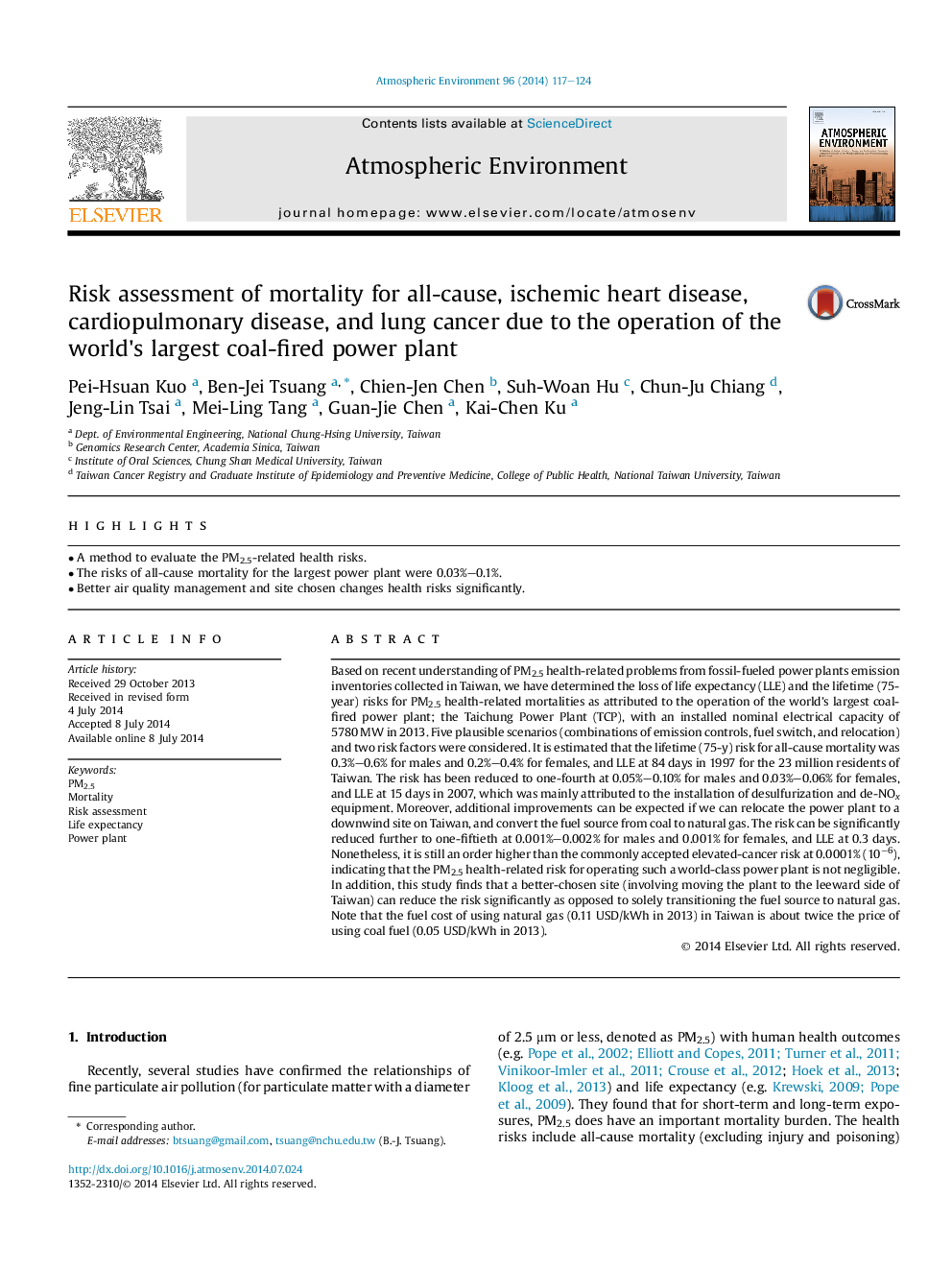| کد مقاله | کد نشریه | سال انتشار | مقاله انگلیسی | نسخه تمام متن |
|---|---|---|---|---|
| 6339909 | 1620375 | 2014 | 8 صفحه PDF | دانلود رایگان |
- A method to evaluate the PM2.5-related health risks.
- The risks of all-cause mortality for the largest power plant were 0.03%-0.1%.
- Better air quality management and site chosen changes health risks significantly.
Based on recent understanding of PM2.5 health-related problems from fossil-fueled power plants emission inventories collected in Taiwan, we have determined the loss of life expectancy (LLE) and the lifetime (75-year) risks for PM2.5 health-related mortalities as attributed to the operation of the world's largest coal-fired power plant; the Taichung Power Plant (TCP), with an installed nominal electrical capacity of 5780Â MW in 2013. Five plausible scenarios (combinations of emission controls, fuel switch, and relocation) and two risk factors were considered. It is estimated that the lifetime (75-y) risk for all-cause mortality was 0.3%-0.6% for males and 0.2%-0.4% for females, and LLE at 84 days in 1997 for the 23 million residents of Taiwan. The risk has been reduced to one-fourth at 0.05%-0.10% for males and 0.03%-0.06% for females, and LLE at 15 days in 2007, which was mainly attributed to the installation of desulfurization and de-NOx equipment. Moreover, additional improvements can be expected if we can relocate the power plant to a downwind site on Taiwan, and convert the fuel source from coal to natural gas. The risk can be significantly reduced further to one-fiftieth at 0.001%-0.002% for males and 0.001% for females, and LLE at 0.3 days. Nonetheless, it is still an order higher than the commonly accepted elevated-cancer risk at 0.0001% (10â6), indicating that the PM2.5 health-related risk for operating such a world-class power plant is not negligible. In addition, this study finds that a better-chosen site (involving moving the plant to the leeward side of Taiwan) can reduce the risk significantly as opposed to solely transitioning the fuel source to natural gas. Note that the fuel cost of using natural gas (0.11Â USD/kWh in 2013) in Taiwan is about twice the price of using coal fuel (0.05Â USD/kWh in 2013).
Journal: Atmospheric Environment - Volume 96, October 2014, Pages 117-124
